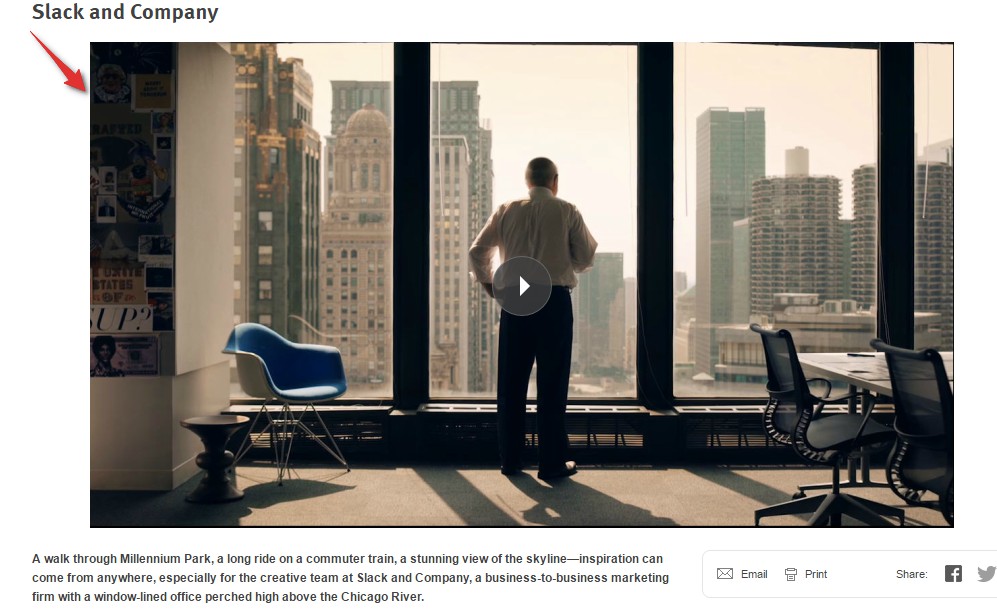This is a guest post by Tavleen Kaur. Tavleen is a Positioning Strategist and the founder of TheYouEngine.com. She helps coaches and consultants position themselves in their niche through credible, compelling and empathetic copywriting.
Writing a case study that’s capable of selling your product/service is hard work.
Bringing out a story that resonates and moves your prospect’s mental needle requires extensive research.
A case study isn’t exactly a pitch and must not sound like one. It must engage your audience and navigate them through the decision-making process.
Case studies are conversion assets for your business and can be the difference between skeptic prospects and convinced, paying clients.
They communicate how satisfactorily you hand-hold your clients through the journey.
In this article, I will take you through 9 simple techniques for writing a powerful case study that can tip your audience’s needle in the favor of a sale.
1. Choose the right persona for your case study
Your ideal clients may be young men in the age group of 22-26. In that case, your case study must speak to them. If your leading protagonist has things in common with your ideal customer, your story will be a lot more relatable.
Building on that thought, if you are a copywriter and your case studies are from clients in the health & wellness niche, a potential client from the technology industry will struggle to relate to it.
They may dismiss the raving reviews from your health industry clients thinking that you do not have the relevant experience to work in the tech niche.
If you dig deep to understand the motivations and desires of your persona, you will be best equipped to cover those in your case study.
It must successfully communicate that you know their industry’s specific needs and can get them the results they’re craving. That’s the only way to make them feel comfortable with the thought of working with you.
2. Create compelling headlines that entice the scanners into reading
The headline of your case study should be so tantalizing that a potential client shouldn’t be able to resist reading it.
If you start off on a boring note like – ‘How XYZ Program helped Tara lose weight’. It will sound more like an ad commercial than an authentic case study. It will fail to pull in your potential clients.
You may use the power of juxtaposition to make your headline enticing. For example:
How Tara lost 120 kgs to fit into her slim-fit jeans from school time
You could further make this specific by adding a time period:
How Tara lost 120 kgs to fit into her slim-fit jeans from school time in 35 days
You could even go one step further and address your client’s biggest objection to achieving the goal. Here’s an example:
How Tara lost 120 kgs to fit into her slim-fit jeans from school time in 35 days without watching over her diet like a hawk
Do you notice how specific and interesting this is?
We have used specific numbers and put the spotlight on the audience’s most common objection to losing weight i.e. crash dieting.
3. Start with the results you got your client
You want to start your case study with the most startling part i.e. the results.
Maybe your client had zero subscribers and no online connections to spread awareness about their business when you took over. Your conversion optimization services helped them grow to a list of 320 and sell their first small email course, making their first $1000.
If you give them the results first, you will keep their attention for long. This is also in line with the inverted pyramid technique of journalism. As per which, you should give your readers the most important information first, followed by the lesser important information.
The first 2-3 sentences should tell the readers what the story is about. Also, notice how we use specific numbers to add more credibility to the plot.
4. Talk about their ‘before’ situation
The before situation is quite powerful in a case study. It sets the stage and primes your readers. It also forms a connection because your audience can see a part of themselves in your protagonist’s before life.
A common ground must exist between the problems of your protagonists and those of your prospects. Reading them will be very reassuring for your prospects.
For example, your client may say ‘I spent a lot over advertising but my landing page was just not converting. The bounce rates were astronomically high. I just didn’t know if it was the copy or the layout or aliens!’
A potential client may be able to relate to that situation, the cluelessness of it and nod their head in agreement. Get them to nod their head more often while reading, it shows commitment and consistency.
With the ‘before’ part in place, the ‘after’ part becomes more compelling because the readers now know the backstory.
Like in the previous example of the conversion specialist helping his client make their first $1000, $1000 may be a small number but the in the context of the back story, it is huge.
So here are some questions that you must address while conceiving the ‘before’ part:
- What was their exact situation?
- Why couldn’t they get to the solution on their own?
- What were the major obstacles in their way?
- What did their decision-making process look like?
When interviewing the client, look for cues…
I didn’t know what I was doing…
I wanted to do that but…
I had an idea how to get there but I couldn’t because…
5. Highlight the problem your service/product helped solve
Yes, they were having a tough time. Yes, they were facing the odds. But what was the core of the problem?
Maybe their landing page was not converting because the form was causing friction. Or the copy did not address their pain points directly. Or the message to market match was missing.
Highlight the loopholes and blind spots that they missed. Money is not in the ambiguity here.
In the case we’re discussing, this question will help get to the root of the problem:
Why was the page not converting?
This establishes your understanding of their situation, your expertise and your willingness to go into the trenches to identify the core of the problem.
6. Talk about how your offer addressed the core of their problem
Time to get into the specifics! Share the details of how your service/system helped solve your client’s specific problems.
Your services helped your client make their first $1000 right? How did you pull that off?
Was it a combination of a re-designed form, strategic changes to the copy and more trustworthy images?
Talk about the strategies that you deployed and how you leveraged your expertise to help them achieve the goal.
Maybe you have systems in place or your deep dive surveys are very effective or you test your hypothesis like no other. Talk about them, you have the marching orders!
7. Share the tangible and intangible benefits of working with you
The intangible benefit in this case study could be that your client was clueless about pulling in revenue but after you worked with them, they felt confident about scaling it to new heights. You pumped new energies into their business.
Add some snapshots of the tangible results to make this part credible and trustworthy.
If you increased their subscriber base, share the snapshots of the before and after from their email autoresponder software.
If you are a web designer, show the before-after pictures of their website and its impact on bounce rates/opt-ins.
Pictures have powerful stories to tell. This is where the selling happens.
To make the benefits of working with you more compelling, touch upon the other solutions that exist in the market that your client chose you over.
8. Format your case study for skimmers and scanners
Your prospects may be damn serious about buying from you and may read every single word in your case study.
This means it’s great to include every detail in it to make it a conversion asset. But you must respect their time and format it for the scanners in your audience.
Avoid using long sentences and a wall of text that prevents even the most compelling stories from being read from start to finish.
This is where your subheadings play an important role. Effective subheadings can pull in the scanners because they make a section sound interesting and worthy of being read.
Let’s say someone scrolling through your case study comes across this subhead:
“The first time I hired a copywriter, I got burned. I lost $2500 while the total budget for my new startup was just over $3000.”
Won’t this raise their eyebrows and switch their mode from scanner to reader?
This is exactly what a good subheading is supposed to do – stop the time-strapped scanners in their tracks.
Use bullet points, images, bold text, easy to read words and sentences to keep their reading mode turned on.
Also notice, how quoting your clients in their own words amps up the credibility of your case study. Using their quotes as subheads is a powerful strategy.
9. Choose the best format to share your case study
You can use different formats for your case studies to appeal to different learners in your audience. Zapier uses a simple blog post format to tell the compelling story of its client, Kissmetrics:
Hermanmiller.com (a furniture designer and manufacturer) uses a combination of a short video and an article to share the case study of its client, Slack and Company:
Another popular format of a case study is an interview. You could simply publish a text-based interview of your client or a video interview conducted over Skype/Google Hangout/Zoom etc.
Infographics and podcasts are other popular methods. Make sure you cover the points we discussed above.
Final Thoughts
When potential customers read your case study, they are looking for a proof that you can do what you say and get them the results. Make sure your case studies communicate this well and give your prospects the confidence to say yes.
They must touch upon the other similar solutions and substitutes that exist in the market and why your clients choose you over others.
Case studies that inspire trust and confidence can help businesses grow.
Are you writing a case study for your own business or maybe for your client? I am curious to know which of the above techniques resonated most with you. Do let me know in the comment box below.
Got a low-converting copy? I can help. Write to me and I’ll offer you a free critique to plug the leaks, make it more congruent & empathetic so that even your most skeptic prospects say, ‘I want this now.’ Write to me at [email protected]




